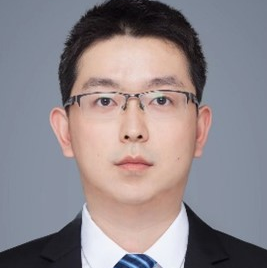High-Reliability Semiconductor Devices and Integrated Circuits
A special issue of Micromachines (ISSN 2072-666X). This special issue belongs to the section "D1: Semiconductor Devices".
Deadline for manuscript submissions: closed (30 November 2023) | Viewed by 20970
Special Issue Editors
Interests: failure mechanism and model of key devices; prognostics and health management (PHM) of power conversion system (PCS); PHM of system on chip (SoC)
Special Issues, Collections and Topics in MDPI journals
Interests: integrated circuits design; simulation and evaluation method of radiation effects in aerospace integrated circuits
Special Issues, Collections and Topics in MDPI journals
Interests: VLSI design and optimization; brain-inspired computing; EDA technology
Special Issues, Collections and Topics in MDPI journals
Special Issue Information
Dear Colleagues,
In this Special Issue on “High-reliability semiconductor devices and integrated circuits”, we will focus on simulation, modeling, design, and optimization for high-reliability devices and integrated circuits for automobiles, avionics, and aerospace. High-reliability devices and integrated circuits are intensely studied because they are widely used in traditional aerospace electronic systems, avionics, automobiles, etc. In recent years, in addition to the development of traditional highly reliable devices and circuits, new technologies such as intelligent analysis, optimization, and manufacturing based on artificial intelligence and other novel technologies have brought vitality to the field of high-reliability devices and circuits.
The objective of this Special Issue is to collect research works focused on mathematical models, high-efficiency/-precision numerical solution methods, and intelligent design and optimization methods for high-reliability materials and devices and integrated circuits. We welcome novel works reporting on high-reliability devices and circuits and their applications to discuss the most recent breakthroughs and the potential impacts in related research fields. The specific topics of interest include, but are not limited to, the following:
- Novel design method for high-reliability devices and integrated circuit;
- Novel optimization technology for high-reliability devices and integrated circuit;
- Advanced device structure or materials for high-reliability design;
- Reliability analysis of the special environment, such as a strong magnetic field, radiation environment, etc.;
- Application of novel technology, such as AI, in high-reliability design and analysis;
- Novel simulation technology for functional safety.
Dr. Yiqiang Chen
Dr. Yi Liu
Dr. Changqing Xu
Guest Editors
Manuscript Submission Information
Manuscripts should be submitted online at www.mdpi.com by registering and logging in to this website. Once you are registered, click here to go to the submission form. Manuscripts can be submitted until the deadline. All submissions that pass pre-check are peer-reviewed. Accepted papers will be published continuously in the journal (as soon as accepted) and will be listed together on the special issue website. Research articles, review articles as well as short communications are invited. For planned papers, a title and short abstract (about 100 words) can be sent to the Editorial Office for announcement on this website.
Submitted manuscripts should not have been published previously, nor be under consideration for publication elsewhere (except conference proceedings papers). All manuscripts are thoroughly refereed through a single-blind peer-review process. A guide for authors and other relevant information for submission of manuscripts is available on the Instructions for Authors page. Micromachines is an international peer-reviewed open access monthly journal published by MDPI.
Please visit the Instructions for Authors page before submitting a manuscript. The Article Processing Charge (APC) for publication in this open access journal is 2600 CHF (Swiss Francs). Submitted papers should be well formatted and use good English. Authors may use MDPI's English editing service prior to publication or during author revisions.
Keywords
- high reliability
- semiconductor devices
- integrated circuits
- strong magnetic field
- radiation environment
- intelligent design








